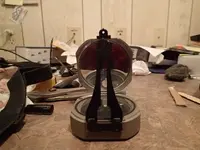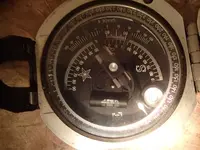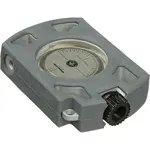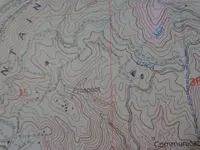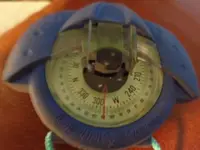Heat definitely speeds things up. I guess when I think of volcanic I think of extrusive, but that's probably incorrect. Most of central Idaho's metals are the result of the Idaho Batholith, which is granitic. Even in places where it didn't come to the surface, I know it's down there, lifting things up, and causing faults, breakage, etc. Most of Idaho's lode gold is found within a mile of the boundary between the granite and the country rock, and can be in veins in either one. Both the granite and the country rock get fractured as the mountains are forced up. I read one geologist who said there is more metal deposited, by far, from water trickling down through the fractured rock than by water coming up from below. From what I've seen, I tend to believe him. I think a lot of those surface deposits were probably formed at shallow depths, and not really very hot. Acidic water dissolves the host rock, freeing the chemicals, and then they get redeposited in a more concentrated form (lucky for us). Or maybe the deposits were formed before they were pushed to the surface, and while they were still at great depths? I doubt anybody knows for sure. I've spent a lot of time thinking about it, and the only conclusion I've reached is that I don't know.
Birch Ck valley has deposits just above the valley floor, and farther north there are deposits at 10,000'. Almost a vertical mile of difference. No way to know how deep those peaks were when it all started rising up. Also, there were different intervals of lifting. The old Lost Texas Jack deposit looks to me like it came later. Going in the adits (2), you can see at the face of the drift where the intrusion caused a seam of breakage in the rock across the face of the drift. obviously that silver was visible at the surface, and they drove the shaft in about 50', and cleaned it all out. When they couldn't see any more visible metal, they quit. Could still be metal there, of course, but no way to know which direction....except to keep following the breakage fault. Too spendy for this old man, though it would be fun. You can "read" the intrusion from the outside, and when I estimated I knew the likely spot for another metal seam to be, I went through the brush and found the second adit. I think I'm the only person who knows it's there. It goes in about 90'. Cleaned it out, and quit, again. All that work was done in one summer..1950. The deposit was originally found in the 1880's, but Texas Jack died, and nobody could find the lode. The guys that worked it just happened on it when bear hunting in the fall of 1949. I didn't know it had been found, but using Jack's directions, I found it in 4 months of searching in 2012. After finding it, I went to the county and found the original claim notice filed in the spring of 1950. it wasn't renewed in 1951.
There's also, according to geologists, a 3/4 mile section of old gold-bearing riverbed at about 8,000'. That was worked for gold for a couple of years in the 19th century, but lack of water probably ended that. You can still find some evidence of the work done. So, that particular part of the mountain range had to spend some years down in the valley...and maybe thousands of years. I've spent some time detecting that area, but haven't found any gold.
The Lost Texas Jack Mine story was mentioned in the 1975 edition of the Gold Digger's Atlas by H. Cyril Johnson of Susanville, CA.
Jim



